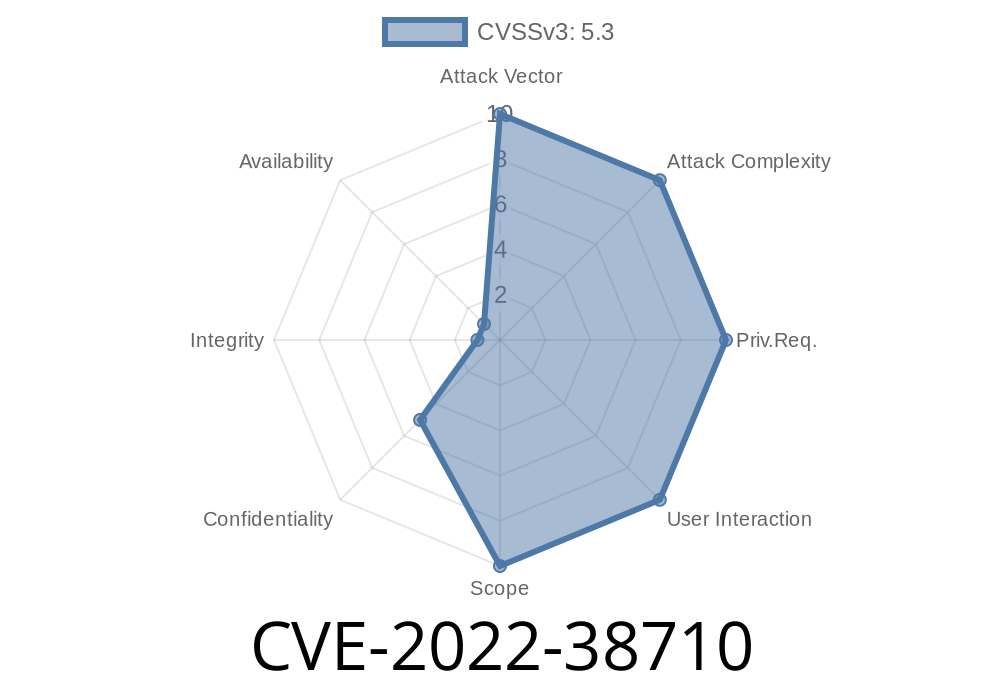The recently discovered vulnerability CVE-2022-38710 affects IBM Robotic Process Automation (RPA) versions 21..1 and 21..2. This vulnerability could lead to the disclosure of sensitive version information, potentially aiding cybercriminals in further attacks against a targeted system. IBM X-Force, the company's threat intelligence and research division, has assigned it an ID of 234292. In this deep-dive, we'll provide an overview of the vulnerability, a code snippet demonstrating the potential exploit, and extensive details on how attackers might use this information to compromise systems.
Vulnerability Overview
IBM Robotic Process Automation (RPA) is a platform for automating business processes using software robots that mimic human actions. These robots can perform tasks like data manipulation, communication, and integration with various systems. A key strength of RPA lies in its ability to streamline complex workflows, thereby improving productivity and reducing human error.
CVE-2022-38710 is a vulnerability classified as an Information Disclosure issue. The affected systems might inadvertently reveal sensitive version information, possibly including software build numbers, patch levels, and component data. This information could then be used in further targeted attacks, such as exploiting known software vulnerabilities or crafting phishing campaigns tailored to a particular environment.
References to the original announcements detailing this vulnerability can be found here
- IBM Security Bulletin
- National Vulnerability Database (NVD) Entry
Exploit Details
The precise details of how an attacker might exploit CVE-2022-38710 have not been disclosed to avoid facilitating malicious use. However, it's possible to imagine a scenario in which an unauthenticated user sends a crafted HTTP request to the affected IBM RPA system. This request could potentially trigger a response containing sensitive version information.
Here's a simple code snippet illustrating a hypothetical HTTP request to an RPA server
import requests
target_url = "http://example.com/ibm_rpa_endpoint";
response = requests.get(target_url)
if response.status_code == 200:
print("RPA Version Information: ", response.text)
else:
print("Request failed with status code: ", response.status_code)
In this example, the successful HTTP request (status code 200) would result in the printing of sensitive version information retrieved from the targeted RPA server. An attacker could then use this information to plan further attacks.
Mitigation Strategies
IBM has addressed this vulnerability in newer releases of the IBM Robotic Process Automation software. Organizations using affected versions should update to the latest release as soon as possible to mitigate the risk of exploitation. Detailed instructions for upgrading to a newer version can be found in the IBM Robotic Process Automation documentation.
To further protect systems against potential disclosure of sensitive version information, administrators can also consider implementing network security best practices, including but not limited to:
Enabling intrusion detection and prevention systems.
3. Implementing proper security measures for any APIs and web services interacting with the RPA environment.
Conclusion
CVE-2022-38710 is a serious vulnerability affecting IBM Robotic Process Automation versions 21..1 and 21..2. To secure your systems from potential breaches resulting from this vulnerability, organizations should update their RPA installations to the latest release and implement the recommended mitigation strategies. Stay vigilant and prioritize the security of your business-critical systems to prevent unauthorized access and sensitive information disclosure.
Timeline
Published on: 11/03/2022 20:15:00 UTC
Last modified on: 11/04/2022 15:13:00 UTC
